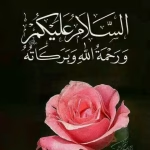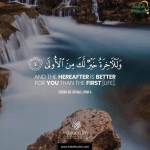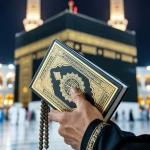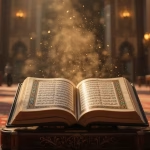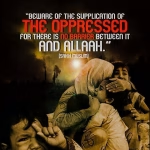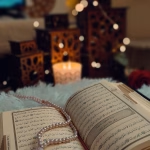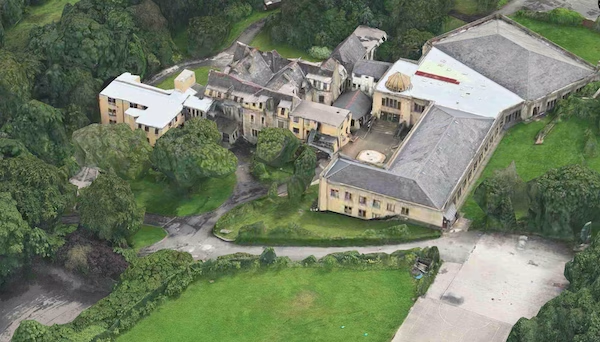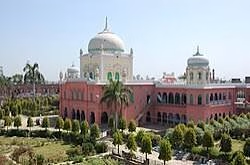🕌 Early Life & Family Roots Born: 25 November 1946 (1 Muḥarram 1366 AH) at his maternal grandfather’s house in Nani Naroli, Gujarat, India . Lineage: Son of Sulayman Motala (descended from the farming community of Varethi, Surat district) and Aminah bint Muḥammad ibn Ismā‘īl Desai, known for her piety . Qur’ān memorisation: Completed his hifz at Madrasah Ta‘līm al‑Qur’ān in his hometown under the care of his maternal grandparents and aunt . 📚 Formal Islamic Education Jamia Husayniyya, Rander (1961–1966): Studied the Alimiyya curriculum for five years, where he first glimpsed his future teacher, Shaykh Zakariyyā Kandhlawī . Mazāhir al‑Ulūm, Saharanpur (1966–1968): Completed the final years of the ‘Ālimiyya course under Shaykh Zakariyyā and other luminaries. Despite his young age, he earned special favour with Sheikh Zakariyyā, who delayed retirement to personally teach him Ṣaḥīḥ al‑Bukhārī, and bestowed upon him ijāzah in tasawwuf. He was affectionately known there as “Qārī Yusuf” . 🌍 Move to the UK & Founding of Darul Uloom Relocation: In 1968, on the instruction of Shaykh Zakariyyā, he accepted an imamate in Bolton, UK, to serve the British Muslim community . Establishment of Darul Uloom Bury (1973): With perseverance, he transformed a derelict sanatorium in Holcombe, Lancashire, into Darul Uloom al‑Arabiyyah al‑Islamiyyah—the UK’s first full‑spectrum Dars‑i‑Nizāmi seminary outside the Indian subcontinent . 🎓 Legacy & Influence Educational impact: Over the decades, thousands graduated from Darul Uloom Bury and its sister institutions (including Bradford for women). Graduates have spread across the UK, Europe, North America, the Middle East, and beyond, many establishing new seminaries . Balanced approach: He encouraged students to pursue both traditional Islamic sciences and Western academia, reflecting deep insight into Western society’s needs . Spiritual character: Known for his humility, gentle demeanour, and deep compassion, he taught with a measured voice and unwavering presence, even through health struggles . ✍️ Writings & Scholarly Contributions Authored numerous works in Urdu, Arabic, and English, including: Adwā’ul‑Bayān fī Tarjamat‑ul‑Qur’ān (Urdu translation of the Qur’ān) Juz’ Amir Tafsīr, Urdū commentary on the Four Imams and pious saints, Jamāl‑e‑Muhammadi, Ināyat Nāmeh, Itā‘at‑e‑Rasūl, and many others . 🕊️ Passing & Posthumous Recognition Demise: He suffered a heart attack on 25 August 2019, passed away on 8 September 2019 (1441 AH) in Mississauga (Toronto region), Canada—and was buried in Woodbridge, Canada. His death was widely mourned; thousands attended his funeral . Honours: Named among “The 500 Most Influential Muslims” in 2011 and honored posthumously in subsequent editions . 🌟 Final Reflections Shaykh Yusuf Motala’s life is a testament to the prophetic legacy: deep bond with scholars of old, rigorous pursuit of knowledge, steadfast service to the Ummah, and spiritual refinement. He bridged continents, tradition and modern realities, building institutions that continue to flourish. May Allah reward him immensely and grant him lofty ranks in Jannat‑ul‑Firdaws, alongside the Prophets and the righteous. Āmīn.
Biography of Shaikh Saeed Palanpuri R.H
🌱 Early Life & Education Born in 1940/1942 in Kaleda village, near Palanpur, Gujarat, India . Received foundational schooling at home from his father, learning Qur’an and basic Islamic sciences . Around age six, began studies at Darul Uloom Chhapi to learn Persian under his maternal uncle for six months . Continued Alim-level studies in Palanpur under local scholars including Mufti Muhammad Akbar Miyā Palanpūrī and Mawlānā Hashim Bukhārī . 📘 Seminal Studies & Scholarship In 1958/1377 AH, joined Mazahir Uloom Saharanpur, mastering subjects like Nahw, logic, philosophy, and early Hadith . In 1960/1380 AH, he enrolled at Darul Uloom Deoband, graduating in 1962 in the Dars-e-Nizami and earning distinction . Studied under prominent scholars of Hadith: Fakhr al-Dīn Murādābādī, Ibrāhīm Balyāwī, Bashīr Aḥmad Khān, Mahdī Hasan, and Qārī Muḥammad Ṭayyib . 🎓 Teaching Career & Positions Post‑graduation, enrolled in the Iftāʾ programme and by 1963/1382 AH became an assistant mufti—unusual for someone so young . From 1965 to 1973, taught upper-level classes (Qur’an, Hadith, Fiqh) at Darul Uloom Ashrafia, Rander, Gujarat . In 1973, invited back to Darul Uloom Deoband on recommendation of Maulana Manzoor Ahmad Naumani, where he continued teaching Jami‘ at-Tirmidhi, Imam Tahawi’s works, and later Sahih Bukhari . 🏫 Leadership & Scholarly Influence Held the positions of Shaykh al-Hadith (Chief Hadith Scholar) and Principal of Deoband from 2008 until his death in 2020 . Taught for nearly five decades, profoundly shaping the seminary’s curriculum and guiding generations of students . Notable students include Muhammad Salman Mansoorpuri, Yasir Nadeem al‑Wajidi, and others across India, UK, South Africa . 📚 Literary Works Prolific author and commentator, with acclaimed works: Tuhfatul Qari, Tafseer Hidayatul Quran (completed tafsir in 2016) Mabadiyat-e-Fiqh, Aap Fatwa Kaise Dein?, Hurmat-e-Musahirat Significant marginalia/commentaries, e.g., on Ashraf Ali Thanwi’s Imdad al-Fatawa, Medina Hasan Deobandi’s Adilla-e-Kamilah, Shah Waliullah Dehlawi’s Hujjatullah al-Balighah . His Urdu tafsir Hidayatul Quran was published in eight volumes, later translated into Bengali . 🕊 Death & Legacy Developed diabetes and fell ill; passed away on 19 May 2020 (25 Ramadan 1441 AH) in Mumbai; due to COVID‑19 restrictions, burial was limited . His death drew profound sorrow across Deoband, India, and the wider Ummah, with scholars like Nomani and Madani acknowledging the loss of a key pillar of hadith and fiqh . Awarded India’s prestigious Presidential Certificate of Honour in 2010 for his contributions to Arabic and Islamic studies . 🔎 Why He Matters Regarded as an “ocean of knowledge and a great intellectual,” whose mastery of hadith and jurisprudence was unmatched in his era . His teaching blended depth with clarity—students treasure his concise yet profound lectures, and he championed clear, thoughtful speech over reliance on technology . As Shaykh al-Hadith and Principal of Deoband, he shaped not just individual students but entire curricula and intellectual trends in Sunni seminaries worldwide. ✨ Concluding Reflection Shaykh Saeed Palanpuri embodied the classic Muslim scholar: rooted in tradition, steeped in the sciences, and unwavering in spiritual humility. He didn’t chase innovation for its own sake but elevated timeless knowledge to meet contemporary challenges—with clarity, courage, and grace.
